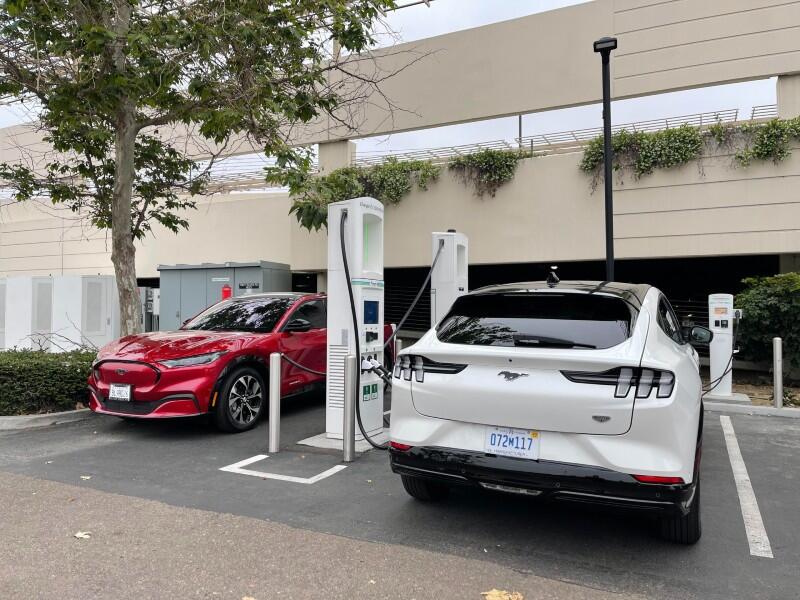In today’s digital age, social media platforms play a crucial role in connecting businesses with their audiences. At the heart of this connection is a complex system known as social media algorithms. Understanding these algorithms is essential for businesses and individuals looking to optimize their social media presence and engagement. In this comprehensive guide, we’ll dive into the intricacies of social media algorithms, how they work, and how you can leverage them to enhance your social media strategy.
What Are Social Media Algorithms?
Social media algorithms are sets of rules and formulas used by platforms like Facebook, Instagram, Twitter, and LinkedIn to determine which content is displayed to users and in what order. These algorithms are designed to provide users with the most relevant and engaging content based on their preferences, interactions, and behaviors.
How Social Media Algorithms Work
Social media algorithms use a combination of factors to decide which posts appear in a user's feed. Here are some key components:
1. User Engagement
Engagement is a critical factor in social media algorithms. Platforms prioritize content that receives high levels of interaction, including likes, comments, shares, and clicks. Content that generates more engagement is deemed more valuable and is likely to be shown to a broader audience.
2. Relevance and Personalization
Algorithms analyze user behavior to personalize the content feed. This includes monitoring which types of posts a user interacts with most frequently, their interests, and their engagement history. For example, if a user often engages with travel-related content, they are more likely to see similar posts in their feed.
3. Recency of Posts
The timeliness of content is another important factor. Social media algorithms often prioritize recent posts to ensure that users are seeing the latest updates. However, some platforms may also consider engagement metrics to balance recency with relevance.
4. Content Type
Different types of content (e.g., photos, videos, links) can be weighted differently by algorithms. For instance, platforms like Instagram may prioritize video content over static images, while others may focus on promoting posts with a mix of media.
5. Relationships and Interactions
Social media platforms give priority to content from accounts that users interact with frequently. This means that posts from friends, family, or frequently engaged accounts are more likely to appear in a user’s feed compared to posts from less familiar sources.
The Impact of Social Media Algorithms on Businesses
For businesses, social media algorithms can be both a challenge and an opportunity. Understanding how these algorithms work can help you craft a more effective social media strategy. Here’s how algorithms can impact your business:
1. Content Visibility
Algorithms determine the visibility of your posts. If your content is not optimized for the algorithm, it may not reach your target audience effectively. This can lead to reduced engagement and a lower return on investment for your social media efforts.
2. Engagement Strategies
To succeed with social media algorithms, businesses need to focus on creating engaging content. This includes understanding what types of content resonate with your audience and encouraging interactions. For instance, asking questions or creating polls can boost engagement rates.
3. Paid Advertising
Social media algorithms also impact paid advertising. Platforms often use algorithms to determine which ads are shown to users based on their interests and behaviors. This means that businesses must carefully target their ads to ensure they reach the right audience.
Tips for Navigating Social Media Algorithms
To maximize your social media strategy, consider the following tips for working with algorithms:
1. Create High-Quality Content
Quality content is key to engaging users and satisfying algorithmic preferences. Focus on creating valuable, relevant, and visually appealing content that encourages likes, shares, and comments.
2. Post Consistently
Consistency helps maintain visibility and engagement. Develop a content calendar to ensure you are posting regularly and keeping your audience engaged.
3. Analyze and Adapt
Use analytics tools to monitor the performance of your posts. Pay attention to engagement metrics and adjust your strategy based on what works best for your audience.
4. Engage with Your Audience
Respond to comments, participate in discussions, and engage with your followers. Building strong relationships with your audience can improve your content’s visibility and increase interaction rates.
5. Stay Updated
Social media algorithms are constantly evolving. Stay informed about changes and updates to algorithms to ensure your strategy remains effective.
Common Misconceptions About Social Media Algorithms
There are several myths about social media algorithms that can lead to confusion. Let’s debunk some of the most common misconceptions:
1. Algorithms are Totally Unpredictable
While algorithms can seem mysterious, they follow specific patterns and criteria. By understanding these patterns, you can better align your content with algorithmic preferences.
2. More Followers Mean More Engagement
Having a large number of followers does not guarantee high engagement. Quality of interactions and relevance of content are more important factors for algorithmic success.
3. Posting Frequency Guarantees Success
Simply posting frequently is not enough. The quality of your content and its relevance to your audience play a significant role in algorithmic success.
The Future of Social Media Algorithms
The future of social media algorithms is likely to involve increased sophistication and personalization. Advances in artificial intelligence and machine learning will continue to shape how algorithms function, making it essential for businesses to stay adaptable and informed.
1. Enhanced Personalization
Expect algorithms to become even more adept at personalizing content based on user preferences and behavior. This will require businesses to focus on creating highly relevant and engaging content.
2. Integration with New Technologies
As new technologies emerge, social media algorithms will integrate with these innovations to provide a more seamless user experience. Businesses should be prepared to adapt their strategies accordingly.
Social media algorithms are a fundamental aspect of modern digital marketing, influencing how content is distributed and consumed. By understanding how these algorithms work and implementing strategies to optimize content for them, businesses can enhance their social media presence and drive better results. Stay informed, adapt to changes, and continue to engage with your audience to leverage the full potential of social media algorithms.
FAQs
1. What are social media algorithms, and how do they function?
Social media algorithms are complex systems used by platforms like Facebook, Instagram, Twitter, and LinkedIn to decide which content appears in a user’s feed. They analyze various factors such as user engagement (likes, comments, shares), the relevance of content, the recency of posts, the type of content (photos, videos, links), and the relationships between users. Algorithms prioritize content that aligns with user preferences and behaviors, aiming to provide a personalized and engaging experience.
2. How does user engagement affect social media algorithms?
User engagement significantly impacts social media algorithms. Platforms prioritize content that generates high levels of interaction, such as likes, comments, shares, and clicks. Content that receives substantial engagement is deemed valuable and is more likely to be shown to a broader audience. Engagement signals to the algorithm that the content resonates with users, increasing its chances of appearing in other users’ feeds.
3. Why is content relevance important for social media algorithms?
Content relevance is crucial because algorithms aim to provide users with posts that match their interests and behaviors. Algorithms analyze user activity, such as the types of posts they interact with and their engagement history, to tailor the content feed. Relevant content is more likely to engage users and elicit interactions, which in turn boosts its visibility. Platforms use relevance to enhance user satisfaction and keep them engaged.
4. How does the recency of posts impact visibility on social media?
Recency plays a significant role in determining the visibility of posts on social media. Algorithms often prioritize recent posts to ensure users see the latest updates from their connections. However, some platforms balance recency with engagement metrics, meaning that highly engaging content might still be shown even if it’s not the most recent. This balance helps maintain a dynamic feed while showcasing content that continues to generate interest.
5. What types of content are favored by social media algorithms?
Different social media platforms may favor various types of content. For instance, Instagram might prioritize video content over static images, while Facebook could emphasize posts with a mix of media. Algorithms assess the performance of different content types and may adjust their preferences based on user engagement and feedback. Businesses should experiment with various content formats to determine what resonates best with their audience.
6. How do social media algorithms affect businesses and their content strategies?
Social media algorithms impact businesses by determining how their content is distributed and seen by their target audience. To succeed, businesses must create engaging content that aligns with algorithmic preferences. This involves understanding what types of posts generate high engagement, posting consistently, and adapting strategies based on performance metrics. Algorithms also affect paid advertising, as they influence which ads are shown to users based on their interests and behaviors.
7. What are some effective strategies for optimizing content for social media algorithms?
To optimize content for social media algorithms, businesses should focus on creating high-quality, engaging posts that resonate with their audience. This includes using eye-catching visuals, crafting compelling headlines, and encouraging interactions through questions or polls. Consistency is key, so develop a content calendar to maintain regular posting. Additionally, analyze engagement metrics to refine your strategy and adapt to changes in algorithm preferences.
8. How can businesses measure the impact of social media algorithms on their performance?
Businesses can measure the impact of social media algorithms by using analytics tools provided by the platforms. These tools offer insights into engagement metrics such as likes, comments, shares, and clicks, as well as reach and impressions. By analyzing these metrics, businesses can assess how their content is performing, identify trends, and make data-driven decisions to improve their social media strategy.
9. What are some common misconceptions about social media algorithms?
Common misconceptions about social media algorithms include the belief that they are completely unpredictable, that having a large number of followers guarantees high engagement, and that posting frequently alone ensures success. In reality, algorithms follow specific patterns and criteria. Engagement quality and relevance are more important than sheer follower numbers, and consistency in content quality is key to achieving algorithmic success.
10. What does the future hold for social media algorithms?
The future of social media algorithms is likely to involve increased sophistication and personalization. Advances in artificial intelligence and machine learning will enable algorithms to better understand user preferences and behaviors, leading to more tailored content experiences. Businesses will need to stay adaptable and informed about algorithm changes to continue optimizing their social media strategies effectively. Emerging technologies may also integrate with algorithms, further enhancing their capabilities and influencing content distribution.
Get in Touch
Website – https://www.webinfomatrix.com
Mobile - +91 9212306116
Whatsapp – https://call.whatsapp.com/voice/9rqVJyqSNMhpdFkKPZGYKj
Skype – shalabh.mishra
Telegram – shalabhmishra
Email - info@webinfomatrix.com

.jpg)
.jpg)





 English (US) ·
English (US) ·